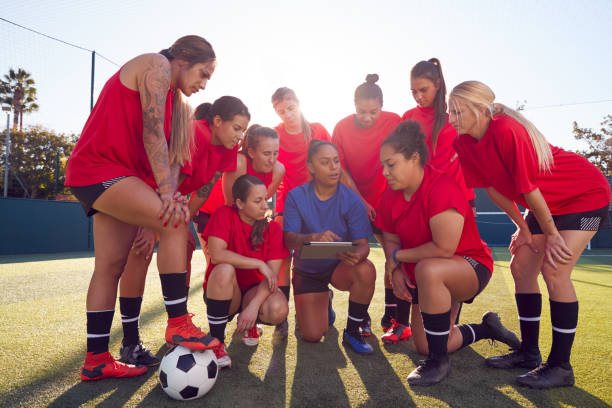
In the realm of college sports, the landscape for women has undergone substantial evolution over the years. From overcoming societal biases to establishing their presence in various sports, women athletes have paved the way toward equality and inclusion in the college sports scene. However, despite these strides, the path hasn’t been void of challenges.
To better understand this journey, we must trace its roots and identify important milestones. Just as students rely on an essay writing service and professional paper writers to write my essay and simplify their academic journey, understanding the history and progress of women’s college sports can be a roadmap for future endeavors.
Historical Progress: Key Milestones
In the initial phase, women’s presence in college sports was scant. However, the enactment of Title IX in 1972, a law barring sex-based discrimination in educational programs, drastically transformed the scenario. This pivotal law laid the groundwork for the expansion of women’s college sports, fueling a surge in female participation.
As years rolled by, Title IX’s impact has been monumental. The participation rate of women in college sports has shot up dramatically, new teams for women’s sports have been created, and visibility for women’s sports events has seen an uptick. Yet, in spite of these strides, women’s sports still encounter numerous obstacles.
Challenges Faced by Women’s Sports
Despite the progress made, women’s sports continue to grapple with issues such as funding, media representation, and societal attitudes. Budget allocations for women’s sports programs often trail behind their male counterparts, and media coverage is disproportionately slanted in favor of men’s sports. The perpetuation of gender stereotypes and biases further deepens these disparities, influencing the perception and treatment of female athletes.
Additionally, while participation rates have increased, opportunities for women to move into coaching and administrative roles within athletics remain limited. This lack of representation at the decision-making level further compounds the challenges faced by women’s sports.
The Importance of Continued Advocacy
Advocacy has been crucial in driving the progress of women’s sports in college. Organizations and individuals alike have campaigned for equal opportunities, better funding, and fair representation of women athletes. Continued advocacy is essential in maintaining the momentum of progress and addressing ongoing challenges.
For instance, initiatives to increase media coverage of women’s sports, campaigns for equal pay, and mentorship programs for aspiring female coaches can help address existing disparities. Students, athletes, and the broader community all have a role to play in advocating for the continued evolution of women’s sports.
Impact on Physical and Mental Health
Sports participation has been consistently linked with multiple physical and mental health benefits, and female athletes are no exception. Engaging in sports tends to boost physical fitness among women, promoting overall health and reducing the risk of chronic illnesses.
On the mental well-being front, sports participation can help mitigate stress, uplift mood, and foster self-esteem. However, it’s essential to recognize that the competitive aspect of college sports can also spawn mental health issues such as performance anxiety and burnout. Therefore, provisioning appropriate mental health support is as critical for female athletes as physical training.
The Influence of Successful Women Athletes
The accomplishments of successful women athletes in college sports have served as powerful inspirations for younger generations. Women like Pat Summit, who led the University of Tennessee’s women’s basketball team to numerous championships, and Mia Hamm, who played college soccer before becoming an international soccer icon, have shown that women can excel at the highest levels of competition.
Their success stories provide motivation and validation for aspiring women athletes and help challenge and break down gender stereotypes in sports. Continued visibility of successful women athletes is crucial in driving forward the progress of women’s sports in college.
Role of Media in Shaping Perceptions
Media serves as a potent force in molding perceptions and attitudes toward women’s sports. Even though media coverage of women’s sports has been on an upward trajectory over the years, it falls significantly short of the coverage accorded to men’s sports. Furthermore, media portrayal of female athletes often leans on gender stereotypes, focusing excessively on their physical appearance rather than their athletic prowess.
Increasing and improving media coverage of women’s sports can help challenge these stereotypes and foster a more inclusive and equal sports culture. Media organizations, journalists, and audiences alike share the responsibility of shaping a more positive and equitable media landscape for women’s sports.
Technology’s Role in Enhancing Women’s Sports
Technology has started playing a crucial role in enhancing women’s sports in college. From performance analytics and injury prevention to fan engagement and media coverage, technological advancements are driving changes in how women’s sports are coached, played, and viewed.
Despite the technological divide often seen between men’s and women’s sports due to funding disparities, efforts are underway to ensure women’s sports also benefit from these advancements. Recognizing and harnessing the potential of technology can aid in overcoming some of the challenges faced by women’s sports and contribute to its continued evolution.
Conclusion
The journey of women’s sports in college is a tale of perseverance, progress, and potential. Much like students utilize the best essay writing services to optimize their academic progress, women in college sports have employed resilience and advocacy to further their cause. However, it’s vital to acknowledge the ongoing challenges and strive for solutions, fostering an environment where the prowess of women athletes is recognized, celebrated, and supported.


































